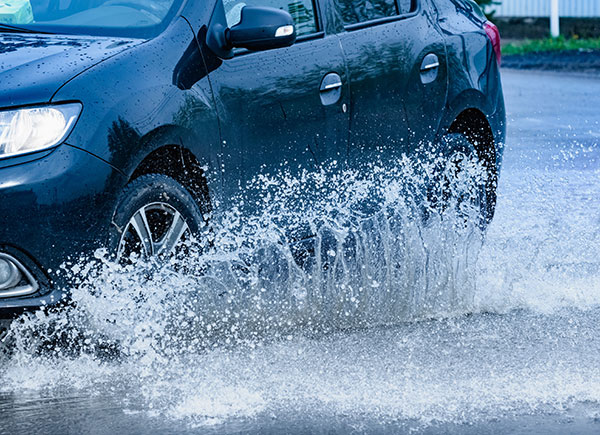
As if driving in Florida couldn’t get any harder, hurricane season is now upon us. Thankfully Polk and Hillsborough counties only got some heavy rain from Hurricane Isaias, which was downgraded to a tropical storm. But with the 2020 hurricane season expected to be more active than usual, Isaias still served as a reminder that we all need to brush up on how to drive safe in a storm.
The Atlantic hurricane season starts on June 1st and runs to November 30th. Florida tends to attract tourists at the beginning of the season and snowbirds towards the end. Natives may think they know best when it comes to driving in rainy conditions, but there are a few tips you might not have heard before. Wherever you’re from, make sure you know these helpful hints for hurricane season!
Eyes on the Road
It’s always important to focus only on the road, but especially in a storm. Wet streets can make driving even more dangerous than it already is. You want to be focused on the road and the cars around you so that you can respond to changing conditions quickly. Keep devices down and minimize all distractions.
Hydroplaning Help
Look out for puddles of water and try to avoid them. You never know how deep a puddle really is but driving through one could cause your car to hydroplane. Avoid these, but also check your tire pressure and tread to reduce your risk of hydroplaning. If you still feel your car start to hydroplane, here’s what to do. Stay calm, ease your foot off the gas, and gently hit the brakes while steering in the direction you want to go. This will keep you heading the right way until your tires get traction again.
Keep off the Cruise Control
It’s also best not to use cruise control when it’s storming outside. Your car may not be able to detect the wet road conditions, and it could speed you up when you really should be slowing down. Remember, it’s better to drive slower than usual when visibility is low.
Timing Is Everything
Take a look outside before you hit the road. Is it so dark and stormy that you can’t even see? It may be best to wait for a while before getting behind the wheel. Wait until the sky clears up to ensure you’re driving safely. You may not be able to avoid the rain completely, but you can try to time it where you miss the heaviest rain and wind.
If you’re already on the road and suddenly you feel like it’s too dangerous to drive, pull over. Don’t feel pressured to keep driving. Find a safe spot away from the road, like a parking lot, and wait it out. You need to feel comfortable and calm in the driver’s seat, so only drive when you feel safe doing so.
Lights On, Hazards Off
This can be a huge point of contention for Florida drivers: do you turn on your hazard lights when it’s raining? According to the Florida law, NO! It’s illegal to drive with your hazard lights on, as it reduces visibility and can actually confuse other drivers. You want them to be able to see your turn signals and brake lights, so turn on your headlights but leave those flashers off.
Drive from a Distance
You probably know it can take a bit longer to come to a full and complete stop when the roads are slick with rain. This means you should leave a little more distance than usual between your car and those in front of you. If they slam on their brakes, you’ll be grateful for the extra space you gave yourself—and so will they.
It can also be a good idea to follow in the tracks of the vehicle in front of you. Usually their tracks will make it easier for you to see the road conditions ahead, and your tires may find it easier to get traction. Just make sure you’re not following too closely when doing this.
We hope for safer hurricane season driving this year. Be sure to remember these hints and share them with a friend who’s new to this part of the country! If you drive a truck, you’ll love our blog post full of tips for driving a truck during hurricane season.
If you’re in a car accident this hurricane season, or any time of the year, look to Brooks Law Group for legal help. We would love to help you and your family in such a stressful time, no matter the weather. Contact us and let’s set up a free video consultation today!













